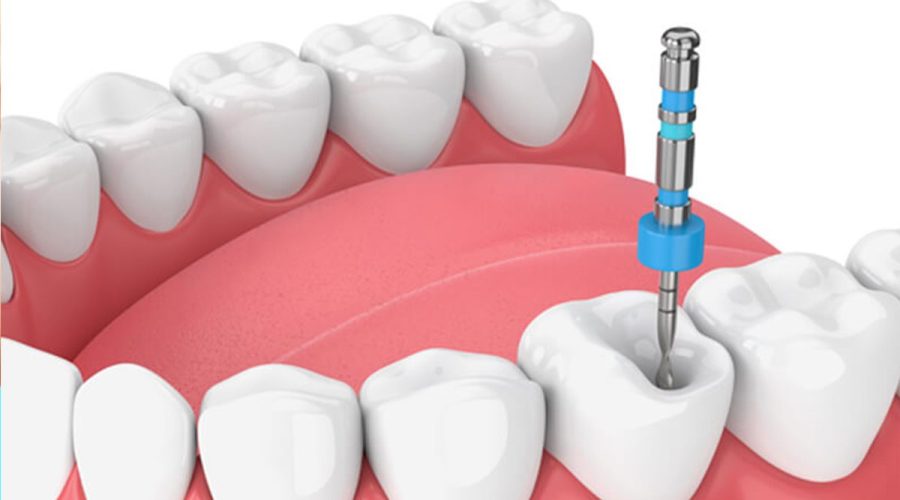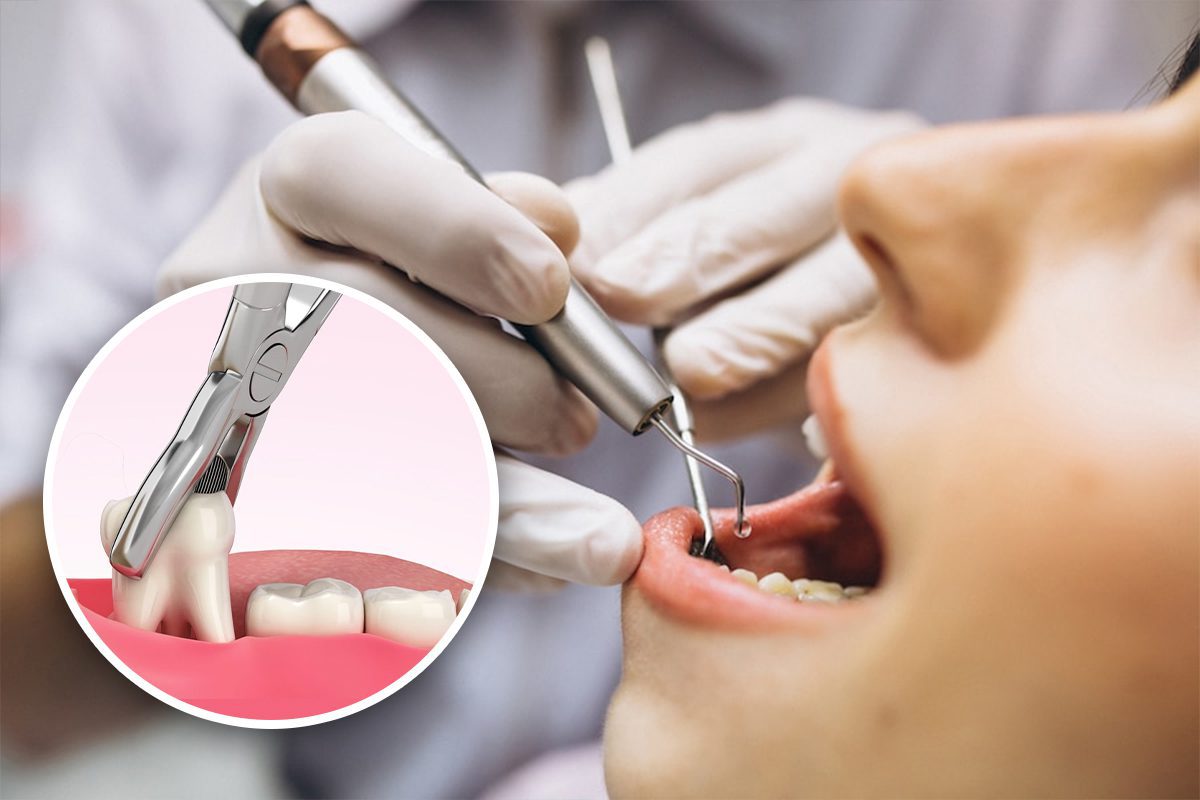Introduction – Need for Root Canal Treatment
Root canal therapy refers to the treatment that has the power to repair and rescue severely decayed or infected teeth. Root canal treatment is done when the dental pulp, made up of nerves and blood vessels in the tooth, is infected or damaged. Root canal treatment aims at removing the pulp and cleaning and sealing the tooth from inside.
Root canal treatment aims to kill bacteria in the infected root canal, prevent reinfection of teeth, and protect natural teeth. When a person receives root canal treatment, the inflamed or infected pulp is removed, tooth cleaning and disinfection are done from inside and then filled and sealed.
People are afraid of root canals because they think it is a painful procedure. Most people share feedback like the operation itself is not more painful than filling. The discomfort experienced before seeking dental care is unbearable, not the operation itself. It becomes essential to pick the right dental clinic at geographical locations like antwerpen for the best results.
Not all types of toothache are an indication for root canal treatment.
Signs that the infection is severe enough to require root canal treatment include:
- Severe tooth pain when eating or pressing on the area
- Toothache and sensitivity to cold or heat remain cold or hot after the stimulus is removed
- A small, lumpy lump The gums near the teeth are painful
- The teeth turn black
- The gums near the teeth are soft or swollen and painful.
Root Canal Treatment Procedure
Root canal treatment is a multi-step dental procedure that involves removing the infected pulp (sometimes the nerve) from the tooth and sealing it to prevent future tooth pain.
The following is the stepwise procedure of the treatment
- Setting the stage: Your dentist will take X-rays to determine the degree of infection.
- Numbness: The first step in operation is local anesthesia to numb the area and prevent tooth pain. You will receive local anesthesia to make you more comfortable, and a “rubber dam,” a piece of a rubber-like material, will be placed surrounding the tooth for keeping it dry.
- Diving: Next, your dentist or endodontist will drill an access hole in the tooth. Here, he would use special tools to remove the damaged nerve and pulp tissue.
- Sealing: After removing the infected material, your dentist will seal the tooth or place temporary fillings on the same day to protect it from root canal pain until a customized crown is ready. Sealing the tooth involves placing a rubber compound in the root canal that removes decayed material. The filler is placed on the access hole.
- Finishing Up: Crowns, fillings, or other tooth restorations complete the process of relieving root canal pain. In some cases, your dentist may keep the teeth open so that extra material can be drained from the teeth before filling and sealing them.
Some dentists will temporarily fill the teeth to protect the area, while the infected material will be completely drained. Many people who have undergone the operation say that it is no worse than filling a cavity.
Post Treatment Care
After your surgery, your endodontist will share some instructions on pain management. They will also suggest care methods for your teeth during the recovery period after treatment until a follow-up visit. If temporary crowns or fillings are being placed, the following care guidelines are essential.
Slight pain in the jaw can create a sense of uneasiness but, everything is healing. Because the medicine used to numb the mouth during the operation gradually wears off, you may feel some tenderness in the area in a few days.
These temporary symptoms generally respond well to over-the-counter medications, but your doctor may also prescribe more potent anesthetics. The instructions for the medicine should be followed carefully, as anesthetics can make you drowsy.
Care must be taken when carrying them and driving cars, or operating dangerous machinery. Although the teeth you have treated may feel slightly different from other teeth over some time.
Immediately consult your endodontist if you feel any of the below-mentioned symptoms hitting:
- Allergic reactions to medications (rash, hives, or itching)
- Your bite feels uneven
- Temporary crowns or fillings (if placed) fall off (loss of thin layers is normal)
- What you have experienced Before returning from symptomatic treatment
Recovering from Root Canal Treatment
When you recover from root canal treatment, you need to take care of your teeth. You should avoid biting hard food until the treatment is finished. After your last treatment, your restored tooth should no longer hurt, although it may feel sensitive within a few days.
You can consume painkillers to ease any discomfort. If you still feel swelling or pain even after taking pain relievers, get in touch with your emergency dentist Antwerp (spoed tandarts antwerpen).
In most cases, the need for additional root canal treatment can be avoided:
- Keep your teeth clean
- Do not overeat sugary foods
- Quit smoking immediately if you smoke
How much does a root canal cost?
The cost depends on the severity of the problem and the affected tooth. Many dental insurance policies cover endodontic treatment. If you are still worried about the cost involved, then check the following points
Points that give a brief about the factors that affect the actual cost of root canal treatment:
- Dental condition: If your tooth is cracked/fractured and needs root canal treatment, the cost of treatment will be different and not from infection and swelling. This is because your dentist must treat the infection and deal with the swelling before starting the RCT.
- In regular cases, root canal treatment can now be completed in one course of treatment. In the case of severe infection, the number of sessions can also be increased.
- Type of teeth: For some reason, this surprises most people because they do not know how teeth affect treatment. However, if you think about it, incisors are more accessible to treat than molars, not because of their position in the mouth, but because of the number of root canals—one incisor and three in molars.
How to find a perfect Endodontist?
Finding the right endodontist can be tricky. You need to do a little research and seek the advice of your dentist.
Before making a decision, you should ask the following questions about the endodontist’s practice
-
What kind of technology do you offer?
One of the characteristics of the endodontist is the most advanced technology. If the dentist expects any complications from the root canal surgery, they will refer the patient to the endodontist. Endodontists can better understand your dental problems and provide them with the best care with the most advanced dental equipment.
-
What do others think of this practice?
Don’t forget to review the comments. Whether it’s word of mouth or a quick online search, be sure to hear what other people think of this practice.
-
What type of education does the endodontist have?
An endodontist can be a Doctor of Dental Surgery or a Doctor of Dental Medicine. These levels are also compatible. It is also essential to understand whether they are involved in dental services like continuing education, teaching, and cooperation. Our clinical specialist, Dr. Veronica Stahl, has 25 years of experience in the respective field.
-
How long have they practiced?
Experience is essential when it comes to majors such as endodontics. Look at how long the endodontist has been in practice and in which areas they have experience.




